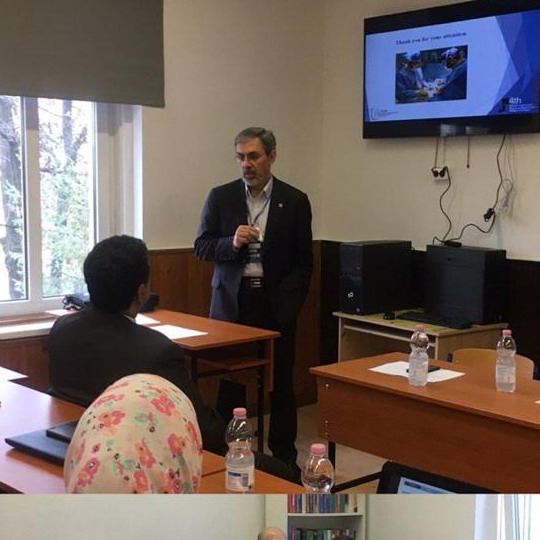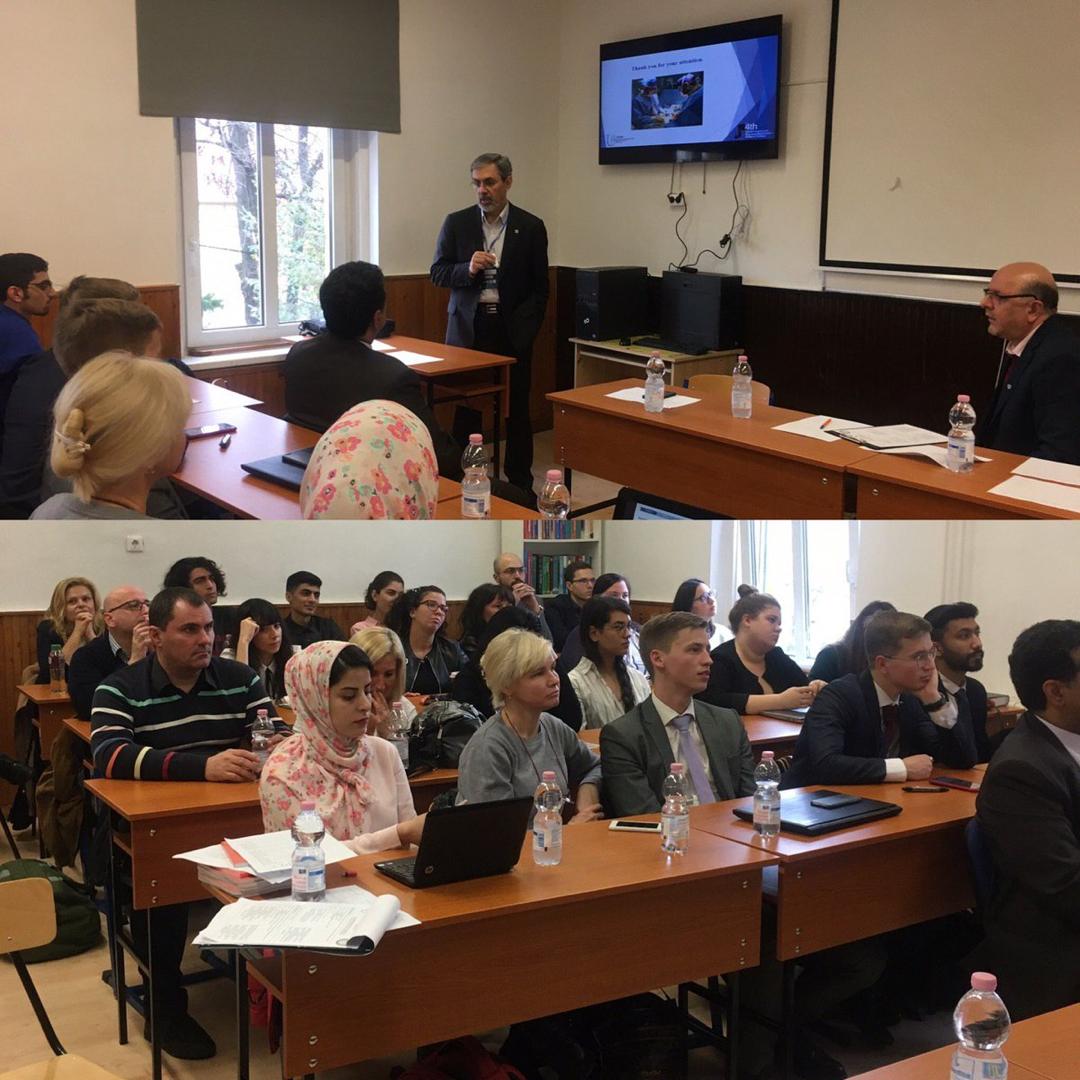A Brief National Report of Liver Transplantation in Iran and Imam Khomeini Hospital Complex by Pro. Ali Jafarian

Pro. Ali Jafarian in 4th meeting of USERN in Budapest presented a lecture on liver transplantation in Iran and special report on liver transplantation in Imam Khomeini Hospital Complex.
Pro. Ali Jafarian in 4th meeting of USERN in Budapest presented a lecture on liver transplantation in Iran and special report on liver transplantation in Imam Khomeini Hospital Complex.
Liver Transplantation in Iran,
 A brief national report and presentation of Imam Khomeini Hospital Complex program
A brief national report and presentation of Imam Khomeini Hospital Complex program Since the successful performance of the first liver transplant in 1967 by Dr. Thomas E. Starzl, liver transplantation (LT) has advanced to become a routine procedure around the world. LT is often the only treatment option for patients with acute or chronic hepatic failure of various etiologies. Advances in surgical techniques as well as immunosuppression have increased patient survival and improved overall quality of life. International data indicate that 27759 liver transplants were performed around the world in 2015 (21% from living donors); 10343 of which were performed in the Region of the Americas and 9545 were performed in Europe. Trends from various countries however show a rise in the number of LT performed year after year. The Iranian LT experience began from 1993 at the Shiraz Organ Transplantation Center (SOTC) as the leading transplant center in the country. Iran’s second transplantation center, at the Imam Khomeini Hospital Complex (IKHC), followed the work in the capital city of Tehran with the first liver transplant done in 2002; after the law of brain dead donation was passed in the Parliament. Several other hospitals thereafter commenced LT programs in different regions of the country and now adult and pediatric LTs are successfully performed at different transplant centers in Iran. The situation of liver transplantation in Iran demonstrate that in a region noted for a relative lack of donation and transplantation, coordinated efforts at the societal, institutional and governmental levels can bring LT services to rank amongst the highest in the world. That’s why the total number of liver transplantation in Iran passed 6000 in 2019.
Over 1000 liver Transplantation are done at Hepatopancreatobiliary & Liver Transplant Division in IKHC since January 2002. The number of liver transplants reached to more than 50 per year in 2012 and more than 100 per year in 2015. All liver grafts are from brain dead donors except for 3 living related donors, 2 pediatric recipients and 1 adult acute liver failure. The leading etiology for End Stage Liver Disease (ESLD) among our recipients was Cryptogenic/NASH (Non Alcoholic SteatoHepatitis) followed by Autoimmune Hepatitis, Hepatitis B and Hepatitis C. The mean age of liver graft recipients was 43.4 ±14 years (min = 1, max = 69) and 59% were male. The average MELD score was 21. Major advancements in the past 8 years are reduced blood transfusion to the average of less than 2 units per patient with 30% of patient transplanted without any transfusion; cold ischemic time of less than 5 hours and mean operative time of 275 minutes. The overall survival of all patients is 83.5, 80.5 and 77 percent for 1, 3 and 5 years and is improving in the past 8 years.
Ali Jafarian M.D.
Professor, Department of General Surgery, School of Medicine, TUMS
Chief, Hepatopancreatobiliary & Liver Transplantation Division, IKHC, TUMS
Reference: Liver Transplantation Status in Iran: A Multi-center Report on the Main Transplant Indicators and Survival Rates- Arch Iran Med. July 2018; 21(7):275-282


Send to friends